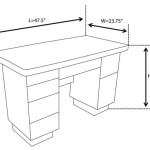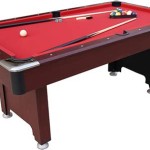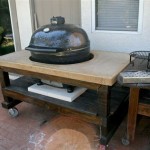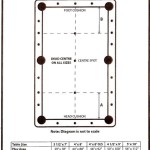Best Containers For Growing Vegetables Indoors In Winter Near Me
Cultivating vegetables indoors during the winter months presents a viable solution for obtaining fresh produce, particularly in regions experiencing colder climates. The selection of suitable containers is a critical factor influencing the success of an indoor vegetable garden. This article delves into the optimal container choices for indoor vegetable gardening during winter, considering aspects such as material, size, drainage, and suitability for various vegetable types. Furthermore, it addresses considerations specific to sourcing these containers locally.
The selection of appropriate vegetable varieties for indoor cultivation is paramount. Leafy greens like spinach, lettuce, and kale thrive indoors due to their relatively shallow root systems and tolerance of lower light conditions. Herbs such as basil, parsley, and chives are also well-suited for indoor growth. Certain fruiting vegetables, including dwarf tomatoes, peppers, and strawberries, can be grown indoors with sufficient light and proper care. However, larger vegetables like corn or pumpkins are generally impractical for indoor container gardening.
Material Matters: Container Construction and its Impact
The material composition of a container directly affects its durability, moisture retention, and heat absorption, all of which influence plant health. Common container materials include plastic, terracotta, ceramic, fabric, and wood.
Plastic containers are lightweight, affordable, and readily available. They retain moisture effectively, which can be advantageous in the drier indoor environment during winter. However, this moisture retention can also lead to overwatering and root rot if drainage is inadequate. Furthermore, some plastics may leach chemicals into the soil, potentially affecting plant health. Opting for food-grade or BPA-free plastic containers mitigates this risk.
Terracotta pots, known for their porous nature, offer excellent aeration and drainage. This reduces the risk of overwatering and promotes healthy root development. However, terracotta dries out quickly, requiring more frequent watering, especially in heated indoor environments. The weight of terracotta can also be a consideration, particularly for larger containers. Terracotta pots are often available at local nurseries and garden centers.
Ceramic containers, similar to terracotta, offer aesthetic appeal and come in a variety of shapes and sizes. While generally less porous than terracotta, ceramic containers still provide better aeration than plastic. Glazed ceramic pots retain more moisture than unglazed ones. The same weight considerations as terracotta apply. Local craft fairs and pottery studios can be sources for unique ceramic containers.
Fabric pots, often made from breathable geotextile material, are becoming increasingly popular. They offer excellent aeration and drainage, similar to terracotta, but are significantly lighter. Fabric pots promote air pruning of roots, stimulating the growth of a denser and healthier root system. They are also relatively inexpensive and easy to store when not in use. Local hydroponic stores and online retailers are common sources for fabric pots.
Wooden containers provide a natural aesthetic and can be constructed from various types of wood. Untreated wood can rot over time due to moisture exposure, so it's essential to use rot-resistant wood like cedar or redwood, or to line the container with plastic. Wooden containers can be heavy and bulky, but they offer excellent insulation and can help regulate soil temperature. Local lumberyards and woodworking shops can supply materials for constructing custom wooden containers.
Sizing Up the Situation: Container Dimensions and Root Space
The size of the container is crucial for providing adequate space for root development and supporting the growth of the vegetable plant. Insufficient container size can lead to stunted growth, nutrient deficiencies, and reduced yields. Conversely, excessively large containers can retain too much moisture, increasing the risk of root rot.
Leafy greens, such as lettuce and spinach, typically require containers that are at least 6 inches deep and wide. Herbs can thrive in containers of similar size. Dwarf tomato varieties require containers that are at least 12 inches deep and wide, while larger tomato varieties may need even larger containers. Peppers generally require containers that are 8-12 inches deep and wide. Root vegetables, like carrots and radishes, need containers that are deep enough to accommodate their root length, typically at least 8-10 inches.
When selecting container sizes, consider the mature size of the vegetable plant and the root system's growth habit. It is always preferable to err on the side of slightly larger containers to provide ample room for growth. Grouping multiple smaller plants in a larger container can be an efficient way to maximize space and create a visually appealing arrangement.
Drainage Dynamics: Preventing Waterlogging and Root Rot
Proper drainage is essential for preventing waterlogging and root rot, which are common problems in indoor container gardening. Containers must have drainage holes at the bottom to allow excess water to escape. The size and number of drainage holes should be sufficient to facilitate adequate water flow.
If using containers without drainage holes, it is possible to create drainage by layering gravel or pebbles at the bottom. However, this method is less effective than drainage holes and can reduce the amount of available soil volume. Placing a layer of landscape fabric between the gravel and the soil can prevent the soil from clogging the drainage layer.
Using a well-draining potting mix is also crucial for preventing waterlogging. Avoid using garden soil, as it tends to compact and does not provide adequate drainage in containers. A good potting mix should consist of a blend of peat moss, perlite, and vermiculite. Coco coir is a sustainable alternative to peat moss. Adding compost to the potting mix can provide essential nutrients for plant growth.
Monitoring soil moisture levels regularly is essential for determining when to water. Overwatering is a common mistake in indoor gardening. Allow the top inch or two of soil to dry out before watering again. Use a moisture meter to accurately assess soil moisture levels. The frequency of watering will depend on the type of plant, the size of the container, the type of potting mix, and the ambient temperature and humidity.
Elevating containers slightly above the surface can improve drainage and prevent water from pooling at the bottom. This can be achieved by placing the containers on pot feet, bricks, or other supports. Using saucers underneath the containers can catch excess water and prevent it from damaging surfaces. However, be sure to empty the saucers regularly to prevent water from standing and creating a breeding ground for mosquitoes.
Local nurseries and garden centers typically offer a wide selection of drainage solutions, including containers with pre-drilled drainage holes, pot feet, and saucers. Online retailers also provide a variety of drainage products.
Consider the local climate and heating systems when evaluating containers. If the indoor environment is particularly dry due to forced-air heating, containers that retain moisture, such as plastic or glazed ceramic, may be preferable. In humid environments, containers that promote drainage and aeration, such as terracotta or fabric pots, may be more suitable.
When sourcing containers locally, explore options beyond traditional garden centers. Thrift stores and flea markets can be excellent sources for inexpensive and unique containers. Repurposing existing items, such as buckets, tubs, or even old shoes, can be a creative and cost-effective way to create containers. Just be sure to clean the containers thoroughly and drill drainage holes if necessary.
Consider the visual aesthetics of the containers and how they complement the indoor decor. Choose containers that are visually appealing and that create a cohesive and attractive display. Painting or decorating containers can add a personal touch and enhance the overall aesthetic appeal of the indoor garden.
Finally, remember that success in indoor vegetable gardening requires ongoing monitoring and adjustments. Observe the plants regularly for signs of stress, such as wilting, yellowing leaves, or stunted growth. Adjust watering, fertilization, and lighting as needed to provide optimal growing conditions. With careful planning and attention to detail, it is possible to enjoy a bountiful harvest of fresh vegetables throughout the winter months, sourced from containers perfectly suited to the task and readily available in the local vicinity.

How To Grow An Indoor Survival Garden The Provident Prepper

The Best 11 Vegetables To Grow In Pots And Containers

Container Gardening Best Vegetables To Grow In Pots Growing The Garden

Quickstart Guide To Container Vegetable Gardening Lovely Greens

How To Grow An Indoor Survival Garden The Provident Prepper

Container Gardening Best Vegetables To Grow In Pots Growing The Garden

Vegetable Container Gardening For Beginners The Old Farmer S Almanac

How To Grow Vegetables Indoors Easy Beginner S Guide

Quickstart Guide To Container Vegetable Gardening Lovely Greens

Gardening In Grow Bags Answers To All Your Questions Joegardener








